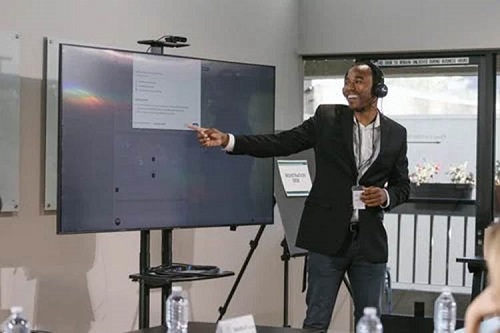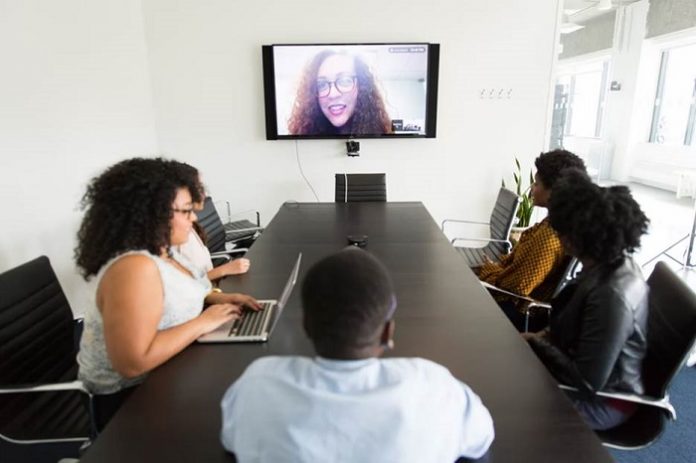One of the most cost-effective tools to help improve your business is video conferencing. It gives you the ability to connect with clients and employees in real-time by using technology. However, like any tool, it can be improved upon. Here are some hacks that will make your video conferencing more effective:
1. Get Quality Equipment
The first video conferencing hack is to ensure you have a quality system. As mentioned at 323.tv, you should have a camera with a good field of view, high-quality audio and video, and the ability to share your screen. Make sure all participants have quality equipment as well. There are many different options to work with, so find the one that will work best for your needs.
When shopping for the right video conferencing equipment, there are a few things to consider. Ensure that you can connect your computer with other people’s computers through something like an internet connection or network cable.
The next thing is that it should be easy for others to join the meeting. You can accomplish this by having them enter a code into their screen sharing software if they use one and even send out invitations via email, so they know precisely what meetings will take place each day. This makes everything simple for everyone involved because they don’t need any extra steps when joining you on calls; log in and go!
2. Use A Good Connection
Getting the best equipment that the market offers will be a waste of time without a good connection. A decent Internet connection and an optimal number of devices will help you avoid those awkward pauses, poor video quality, and the person at the end of your call who has no idea what is going on because they have just tried unsuccessfully to join it late.
The amount of bandwidth in a typical office can be limited by many things like Wi-Fi congestion or hardware that uses up all available network capacity. If so, consider asking IT for extra ports before setting up your meeting room with multiple screens. It’s also worth checking how fast each device connects to the router, which may vary dramatically even if using equipment from the same manufacturer. For example, if you have a laptop, tablet, and smartphone on Wi-Fi in the same room, they will probably connect at different speeds.
Check everything before starting your meeting to avoid people entering late or leaving early because of poor video quality. If possible, ask everyone who is joining remotely to test their connection before starting to fix problems immediately if need be.
3. Consider the Lighting in your Conference Room
The lighting in your conference room has a significant impact on how you look in the video. If there is too much light, it will be hard to see details of what’s going on around you and make people outside the meeting think they see a very bright scene with no one moving inside.
To avoid this problem, it’s advisable to turn off all lights when starting the call right before everyone gets into their seats; once everyone is seated, turn back on just enough lighting so that everybody can still see each other’s faces. During breaks, consider having more light as some participants might want to continue working while chatting via Video Conferencing.
One common mistake made by many companies who have just started using Web Conferencing is to have all the lights on in their office, thinking this will make them look at their best.
4. Put all The Participants’ Names on One Screen, not Just Their Faces
While the faces of all the participants are lovely to see, it can be helpful also to see their names. This will help you track who is talking and when. The names can also come in handy for new members or those not in the room. You can also use it as a way to introduce members of your video conference call or even set up some fun group photos with everyone’s name on them. It would be best to have all the participants’ names spelled correctly before starting the meeting.
5. Turn Off All Notifications on your Phone
One way to stay focused during a video meeting is to turn off all notifications on your phone. This includes email, text messages, and any other app notifications. If you can’t turn off your notifications completely, at least try to silence them, so they don’t make any noise.
This will help ensure that you’re not distracted by anything else in your life and can focus on the meeting at hand.
Tip: You might also want to disable wifi or data on your phone while you’re in the meeting, so you’re not tempted to check your messages or surf the web.
6. Connect with People Before Starting a Conference
Although the conference may be serious business, take a moment to greet everyone and connect with them. Humanizing the experience can help make it feel more like an actual meeting and less like an impersonal conference call.
Some simple things you can do are:
- Say hello when you join the conference
- Introduce yourself, including your role in the meeting
- Thank people for their time
- Ask people how they’re doing today
These small interactions will help create a more positive and productive meeting environment.
7. Create an Agenda for the Meeting

If you want your virtual meetings to be successful, you can’t afford to waste time. One of the best ways to ensure that every session is productive and efficient is by preparing an agenda before your start recording.
The agenda should define: What you’re going to talk about? List all topics one after another in chronological order. How much time will each issue consume? This way, participants know how long they have for each part.
Organizing a successful virtual meeting is not an easy task, as it needs a lot of preparation and planning. The participants should be motivated to attend the virtual meeting without feeling like they are missing out on anything when away from the office. Explained above are seven helpful video conferencing hacks that can make virtual meetings more productive and engaging. Make sure to test them out for your next meeting!








